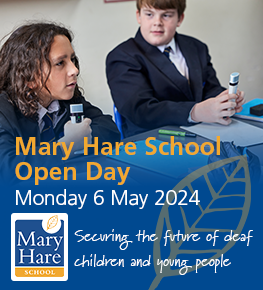3.7. Auditory processing disorder (APD)
Introduction:
APD affects how the brain interprets sound, and thus the meaning of what has been heard, rather than how the sound actually travels along the auditory pathway. It impacts the brain’s ability to filter and interpret sounds; the child can hear but falls short at listening.
APD impacts everyday life primarily through a reduced ability to listen, and so respond appropriately to sounds.
There are common characteristics of APD which in combination may indicate its presence. These include having difficulties:
- listening in noise and more specifically, understanding speech in noisy environments
- maintaining attention
- retaining and remembering instructions
- processing visual information, eg developing reading skills.
Although APD was first identified over 60 years ago, it has taken a lot of discussions to have it acknowledged as an issue to hear accurately. Concerns over how and what to assess made it difficult to create a universal standard by which to make a diagnosis. In 2021, however, the World Health Organisation recognised APD as a ‘hearing disorder’.
It is now recognised that there are three types of APD:
- Developmental – children presenting listing difficulties but showing hearing within normal levels on the audiogram.
- Acquired – as a result of a head trauma, illness, or ageing.
- Secondary – as a result of historical episodes of glue ear or ear infections.
Procedure:
A referral for APD assessment will not be accepted for children under seven years of age. However, if educational and/or healthcare professionals are concerned about the child, they should recommend an audiology referral to have a hearing level assessment (PTA) carried out.
The child can have a history of glue ear, but at the time of the referral, the audiogram must show hearing within normal limits (>20dB) and normal middle and inner ear functions.
Some APD centres will request speech and language and educational psychology reports to support the referral.
Once the referral for APD assessment has been accepted, the child will participate in a range of assessments including audiometry, listening to noise, and spatial awareness.
If a diagnosis of APD is concluded, the final report will recommend that a referral to a QToDs is made by either the family or school. The child is then discharged from the APD centre.
Considerations for QToDs
- The experiences of APD will be individual and specific to each child. It is important to listen to the difficulties the child is facing.
- It is recommended to establish a good relationship with family and school.
- Although the Roger Focus will be recommended at diagnosis, they are not the only answer. Some children with APD prefer no listening device.
- School teachers working with the child need to understand the impact of APD on their learning.
- The family will benefit from advice on supporting their child.
- Family and professionals recognise the CYP will experience a short attention span and may fatigue easily during auditory tasks.
Further reading:
For further information refer to:
http://meshguides.org/guides/node/1432
https://media.gosh.nhs.uk/documents/Auditory_Processing_Disorder_Criteria_at_GOSH_2022.pdf
Next pages in section 3
3.8 Cochlear implant assessment
3.9 Bone conduction implant assessment
Previous pages in section 3
3.1 Newborn hearing screening programme (NHSP)
3.3 Visual reinforcement audiometry
3.5 Assessing children with additional needs
3.6 Auditory neuropathy spectrum disorder (ANSD)
Other sections
- Section 1 Anatomy and physiology of the ear
- Section 2 Aetiology and types of deafness
- Section 4 Acoustics and physics of sound
- Section 5 Listening skills and functional hearing
- Section 6 Hearing technologies




